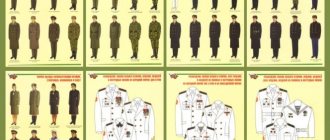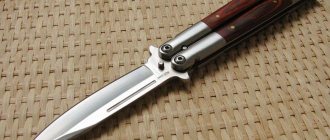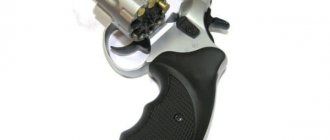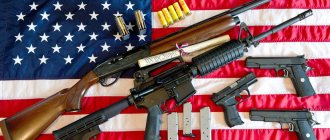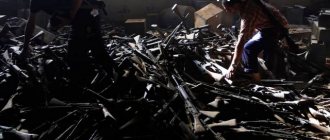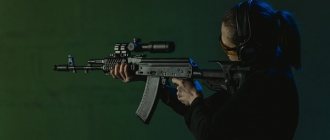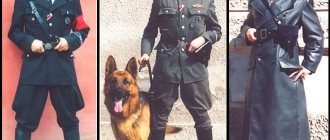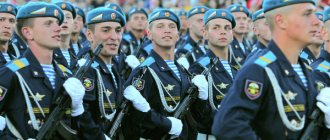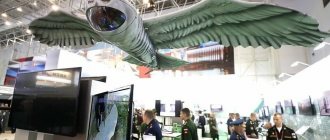Buttonholes are signs in the form " coils "- a vertical rectangle with protruding upper and lower bases, embroidered with golden threads. Along the edges chevrons have an embroidered edging, the color of which depends on the type of troops: for officers (except senior officers and officers of the Navy) in the form of a historical buttonholes golden color on protective cloth - for officers of the Ground Forces, and for officers of the Air Force, Aerospace Forces and Airborne Forces - blue.
A new buttonhole designed to be worn on the corners of the collars of casual suit jackets and casual shirts. These insignia are intended to be worn by the following categories of military personnel:
1) For officers (except for senior officers and officers of the Navy) in the form of a historical golden buttonhole
2) For officers of the Navy (except for senior officers of the Navy ) in the form of golden anchors.
Senior officers - generals and admirals - previously received other symbols on the collar of their office jackets : oak (army generals) and laurel branches embroidered with gold thread. Admirals also have embroidered anchors attached to the branches at the edges of the collar.
New officer lapel insignia for officers of the Armed Forces of the Russian Federation were presented on December 22, 2022 at the expanded board of the Russian Ministry of Defense, which was held in Balashikha near Moscow on the basis of the Strategic Missile Forces Military Academy.
The new buttonholes should be located on the corners of the collars of jackets of everyday suits (office uniforms) and everyday shirts, and these insignia are introduced exclusively for officers of the RF Armed Forces.
At the final expanded meeting of the Ministry of Defense, held at the Military Academy of Strategic Missile Forces in Balashikha, Moscow Region, new officer lapel insignia, embroidered with golden threads in the shape of a vertical rectangle with protruding upper and lower bases, were presented for the first time. Many board members received emblems immediately before the start of the event and immediately sewed them on the collars of their office jackets.
What do buttonholes look like for an office uniform?
Historical buttonholes are signs in the shape of a vertical rectangle with protruding upper and lower bases, embroidered with gold threads and an embroidered edging along the edges. They must be embroidered on khaki cloth, and for the Air Force , VKS and Airborne Forces on blue cloth. The edging for ground forces officers should be khaki, and for the Air Force , Aerospace Forces and Airborne Forces blue.
The total size of the historical buttonhole is 22 by 32 mm. Around the perimeter at a distance of 2mm. there should be edges 1mm wide from the edge. The height of the column on the buttonhole is 24 mm, the width at the widest point is 16 mm, at the narrowest point 8.5 mm.
naval officers (except senior officers) in the form of golden anchors, on black cloth with black edging at a distance of 2 mm. from the edge of the buttonhole . The edge width is also 1 mm. Overall size 31 by 37 mm. Anchor height 34 mm, width 22 mm.
Article 39 main aspects
Let's look at the main comments on the article:
- Legislative acts regulate the procedure for performing service and the status of military personnel obtained after assigning them certain ranks. Military ranks have a sequence of assignment, and indicate the qualifications of a military man, take into account length of service, and position in service. Such subordination maintains discipline and order among the military and establishes subordination between them.
What concepts are regulated by the federal law on conscription and military service?
The introduction of military uniforms also pursues the same goals. It reflects the rank of the employee, his affiliation with a specific branch of the military and service in a specific military unit.
- Samples of military uniforms and insignia are approved by the Supreme Commander-in-Chief of the country, Decree No. 1010, and the rules for wearing them according to the Ministry of Defense of the Federation, Order No. 210.
The order of the Ministry of Defense applies not only to active military personnel, but also to citizens in the reserve, who are retired, but have the right to wear a military uniform of the type that was approved at the time of their dismissal.
Employees serving under a contract have the right to wear civilian clothes when going to the place of duty or upon returning home, as well as during working hours when visiting ministries, enterprises or organizations, whether there is a need for a service uniform.
Rights and obligations of military personnel of the Russian Federation
Military personnel serving on conscription or students of military educational institutions are allowed to wear civilian clothes while outside the military unit (corps), as well as on leave or on leave.
- The military regulations and military legislative acts state that a serviceman must observe military discipline, but he is given the right not to wear specialized uniforms while outside his unit or on a day off (clause 2 of the commented article).
- All samples of military uniforms and insignia are patented by the state (Law 3517-1 of the Russian Federation).
- The list of clothing items and insignia related to the military uniform of employees of the Armed Forces of the Federation, students of Suvorov and cadet military schools, naval and musical military schools, and naval military corps are approved by Order of the Ministry of Defense No. 15.
How to correctly place buttonholes on officers' office uniforms
The overall size of the buttonhole is 22 by 32 mm. Along the entire perimeter of the buttonhole, at a distance of 2 mm from the edge, there are edgings of a protective color (blue for the Air Force , VKS and Airborne Forces ).
Edge width -1mm. The height of the historical buttonhole is 24 mm.
The width of the historical buttonhole at its widest point is 16 mm, at its narrowest point it is 8.5 mm.
New collar tabs for Navy officers' office uniforms
For officers of the Navy (except for senior officers of the Navy ) - in the form of golden anchors.
Overall size 31 by 37 mm. There are black edgings along the perimeter of the buttonhole
Edge width -1mm. Anchor height -34 mm. Width -22 mm.
The lapel chevron is an anchor-shaped sign embroidered with golden threads on a black background. Designed to be worn on the edges of the collar of a Navy officer's jacket
Coil buttonholes on office uniform
How and where exactly these coil buttonholes will be worn on the uniform will be announced later.
Since work has currently been organized to amend the Order of the Minister of Defense of the Russian Federation dated June 22, 2015 No. 300 “On approval of the rules for wearing military uniforms, insignia, departmental insignia and other heraldic signs in the Armed Forces of the Russian Federation and the Mixing Order items of existing and new military uniforms in the Armed Forces of the Russian Federation"
Posting rules
On the left side of the tunic, special insignia must be placed so that the top of the medal block is level with the jacket ledge and lapel. If there are two or more similar signs, they are placed in one line, from the right side to the left. There should be 10mm gaps between the side edges of the stars. If special insignia have the same name, they are worn according to the chronology of presentation.
Orders and medals, as well as their insignia, are placed horizontally from the middle of the chest part of the jacket to the edges. All other lines are placed in the same way. Order blocks in the lower rows must be placed under the awards of the upper row. The space between them should be 3.5 cm.
On jackets and double-breasted tunics, awards are placed in such an order that the tops of the medal and order blocks of the starting line are 7 cm below the level of the lapel ledge. If we are talking about a single-breasted tunic, this figure increases to 9 cm. Order stars should be 1 cm lower than the blocks. see. They are all placed one by one, in a certain order. A gap of 1 cm is maintained between the stars.
If a person is awarded the Order of St. George, 1st degree, then a similar award of the previous, second degree, no longer needs to be worn. The same rule applies to “For services to the Fatherland” (except for the order with the image of swords).
On the right side of the jacket, regalia is hung from left to right. The largest sign on the starting line should have its top level with the common block. Everything that does not fit into the top row is put into the underlying ones. The distance between them is 1 cm.
The “For Impeccable Service” symbol is hung so that its top is level with the lapel ledge. As for the badges attached to it, they are hung to the right. Symbols for the number of wounds are placed on the fabric strip on the top of the product.
Historical background
“This paired golden-colored sign, vaguely reminiscent of a Roman architectural column, is called a buttonhole. By the way, it has already begun to be colloquially called a “spool” - supposedly because of its resemblance to a wooden base for winding sewing threads.
lapel emblems have been developed for officers of the Russian army , similar to the insignia of the Russian Guard of the 19th century, said Elena Sevastyanova, editor of the Ministry of Defense magazine “Warrior of Russia”.
The modern buttonhole, designed to be worn at the edges of the collar of the everyday jacket of an officer of the Russian Armed Forces, apparently dates back to 1811. Then a similar sign was introduced in the Lithuanian Life Guards Regiment formed in the Russian Imperial Army to be worn on the collar and cuffs of the uniform sleeves,” Sevastyanova said. She noted that later other Russian pre-revolutionary guard formations received this symbol.
Sewing (collar) of officers of army rifle regiments for the ceremonial uniform mod. 1909.
“The ceremonial jackets of Soviet officers were decorated with similar signs after the end of the Great Patriotic War. In photographs from the Victory Parade, which took place on Moscow’s Red Square on June 24, 1945, you can see similar buttonholes on the stand-up collars of green officer tunics,” the historian explained, clarifying that the officers of the USSR Navy who participated in the Victory Parade , anchors were embroidered on the jackets.
According to her, until about the mid-1950s, badges were also sewn onto the cuffs of uniforms.
Then they were abolished. “Now the historical buttonhole has again become an element of the combined arms uniform. The clothing department of the Russian Ministry of Defense provides naval officers with another emblem depicting a traditional admiralty anchor. The same gold-colored metal sign has been used since Soviet times to be worn on the black ceremonial jackets of Navy officers,” the expert said. She added that senior officers - generals and admirals - previously received other traditional symbols on the collar of their office jackets : oak (army generals) and laurel branches embroidered with five percent gold thread. The admirals also have embroidered anchors attached to the branches located at an angle along the edges of the collar. “Now new lapel badges are made using machine embroidery and stamping from aluminum (anchors). Perhaps in the future, new emblems will be made in a cheaper way - from plastic applied to fabric,” Sevastyanova concluded.
Suvorovites also wear similar buttonholes :
Wearing order
The most important awards for military personnel and civilians - insignia of special distinction - are usually placed on the left side of the jacket. These include medals of Heroes of Russia and the USSR, the award symbol of the Hero of Socialist Labor and Labor of the Russian Federation, as well as the badge of the Mother Heroine Order. Among other awards, the following orders are prescribed to be worn on this side of the jacket under these signs:
- A. Nevsky;
- F. Ushakova;
- M. Kutuzova;
- Courage;
- A. Suvorova;
- G. Zhukova;
- P. Nakhimova;
- Friendship;
- Honor;
- "Parental Glory";
- V. Lenin;
- Red Banner;
- Friendship between nations;
- “For personal courage”;
- October revolution;
- Labor Red Banner;
- "Badge of honor";
- Glory and Labor Glory (all three degrees);
- “For services to the Fatherland” (2-3 degrees).
Among the distinctive symbols, all four degrees of the St. George's Cross are attached to the left side of the jacket. There are also other medals, the list of which is very wide. These include:
- "For courage";
- G. Zhukova;
- P. Nesterova;
- A. Suvorova;
- F. Ushakova;
- A. Pushkin;
- “Defender of Free Russia”;
- “For achievements in protecting the state border and public peace”;
- Millennium of Kazan.
The placement of medals on the ceremonial jacket implies the presence on the left side of almost all Soviet medals from the Second World War. This category includes awards for the defense of the most important cities and localities of the USSR, liberation from occupation or the capture of European capitals. Soviet labor medals are hung on the left side of the jacket. There are also award badges from the Russian Ministry of Internal Affairs and medals on the jackets of the Ministry of Emergency Situations.
Fewer awards are worn on the right side of the jacket. The main ones are signs of domestic honorary titles, the number of wounds, and the distinction “For Impeccable Service.” Among the orders hanged:
- G. Zhukova;
- F. Ushakova (1-3 degrees);
- P. Nakhimova (1-3 st.);
- A. Suvorov (1-3 degrees);
- M. Kutuzova (1-3 degrees);
- B. Khmelnitsky (1-3 degrees);
- “For service to the Motherland” in the USSR Armed Forces (1-3 degrees);
- Patriotic War (1st-2nd century);
- A. Nevsky;
- Red Star.
Only one medal is allowed on the right side - “For Distinction in Military Service” of both degrees. It is also customary to wear university graduation symbols there. Some types of orders and medals are hung on a special ribbon on the right shoulder. These include:
- Apostle Andrew the First-Created;
- "For services to the Fatherland";
- St. George 1st Art.
It is not customary to attach the first and third awards from this list together to one ribbon. In the most important, honorable situations, the first order is allowed to be worn on a special chain. The ribbons lie over the symbols located on the right side of the garment. There is a special neck ribbon to which it is customary to attach the insignia of the Order of Merit for the Fatherland and St. George, 2-3 degrees.
